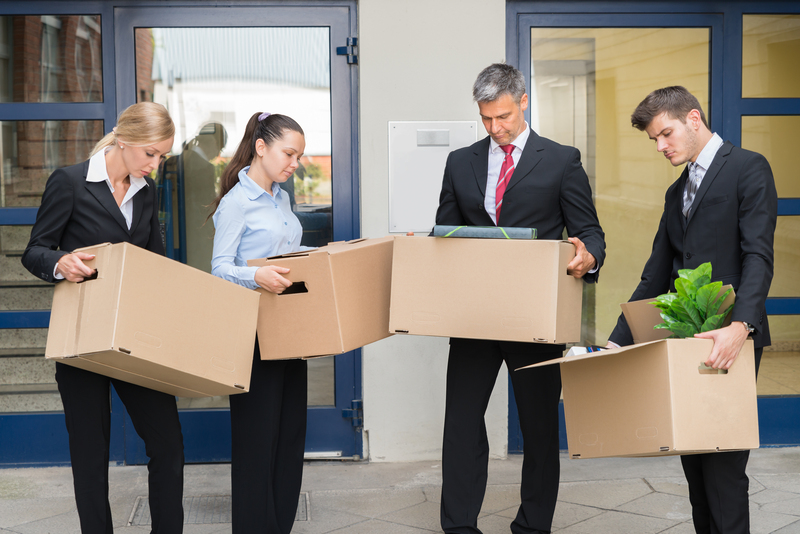How to Pack Like a Professional When Changing Homes
Posted on 21/06/2025
How to Pack Like a Professional When Changing Homes
Changing homes is both an exciting new chapter and a daunting logistical task. Amidst the flurry of notifications, route planning, and administration, one thing stands out as being especially challenging: packing. If you've always envied how seamlessly moving companies wrap, box, and label every item, this comprehensive guide teaches you how to pack like a professional when changing homes. Get ready to streamline your move, preserve your valuables, and save precious time with expert tips, clever hacks, and detailed steps.
Why Packing Efficiently Matters
Before delving into the nitty-gritty of professional packing techniques, it's essential to understand the crucial benefits of organized packing:
- Protection: Well-packed boxes minimize the risk of damage to your belongings.
- Efficiency: Professional packing saves time during both loading and unloading.
- Stress-Reduction: Systematic packing makes it easier to locate important items.
- Cost-Effectiveness: Using smart strategies can help you cut down on packaging supplies and potential replacement costs.
An efficient move starts with knowing how to pack for a house move--let's break down the process step by step.

1. Start Early and Make a Packing Plan
Procrastination is the enemy of a smooth move. Begin by creating a room-by-room packing checklist. Allocate time for each stage, breaking your packing into manageable daily or weekly tasks.
- Set a moving date: Aim to finish packing a day or two before the move.
- Declutter first: Donate, sell, or discard unused items to lighten your load.
- Gather supplies: Stock up on quality boxes, packing tape, labels, bubble wrap, packing paper, and markers.
Tip: Start with items you use infrequently, such as seasonal clothes, artwork, or books.
2. Use the Right Packing Materials
Professional packers invest in top-notch materials for a reason: quality supplies protect your items and speed up the process. Here's what you'll need:
- Sturdy moving boxes: Use various sizes and always check for durability.
- Bubble wrap and packing paper: Safeguard fragile items and prevent scratches or breakage.
- Packing peanuts and foam sheets: Fill empty box space and cushion delicate pieces.
- Strong packing tape: Reinforced tape secures boxes and prevents accidental openings.
- Stretch wrap: Ideal for furniture, artwork, or awkwardly shaped items.
- Markers and color-coded labels: Essential for box identification upon arrival.
_Remember_: Investing in quality moving supplies can save you from costly damages and frustration.
3. Master Professional Packing Techniques
Learning how to pack professionally requires mastering a few key methods:
Right Way to Pack a Box
- Reinforce box bottoms: Double-tape the base for extra strength.
- Distribute weight evenly: Place heavier items at the bottom and lighter ones on top.
- Fill gaps: Use packing paper or foam to prevent shifting during transport.
- Limit box weight: Don't exceed 50 lbs per box for ease of lifting and stacking.
- Label each box clearly: Include room name, brief contents, and handling instructions, like "Fragile."
Professional movers often pack by category and priority. For example, kitchen items in one set of color-coded boxes and bedroom essentials in another.
Expert Fragile Packing Tips
- Wrap items individually: Glassware, dishes, and collectibles should be cushioned on all sides with bubble wrap or paper.
- Use cell boxes: These specialty boxes come with dividers for bottles, glasses, or vases.
- Pad the top and bottom: Add an extra layer of padding at the bottom and top inside the box.
- Don't overpack: Crowding increases the chance of breakage.
4. Organize by Room and Importance
A sure-fire way to pack for moving like a pro is to organize logically. Sort boxes by room and mark "Open First" on essentials.
- Pack room by room: Keep similar items together to simplify unpacking.
- Essentials box: Fill a container with toiletries, a few changes of clothes, vital electronics, and important documents--this should be the first thing you unpack in your new home.
- Personal valuables: Keep jewelry, heirlooms, and critical documents in a clearly labeled, secure box you'll transport yourself.
5. Specialized Packing Advice for Common Household Items
Packing Kitchen Items
- Plates: Stand plates vertically--like records--in boxes, with padding between each one.
- Glasses: Use divided boxes and wrap each glass with bubble wrap or paper.
- Pots and pans: Stack these with padding between each, and fill the spaces with smaller kitchen gadgets or towels.
Clothing and Wardrobe
- Wardrobe boxes: These tall boxes let you transfer hanging clothes directly from the closet.
- Suitcases and drawers: Utilize wheeled luggage for heavy or valuable items. Consider transporting lightweight, non-breakable items inside dresser drawers (removing them before moving the dresser itself).
Electronics
- Original boxes: If you kept them, original packaging offers superior protection.
- Cable management: Photograph wiring setups before unplugging, and use zip ties or resealable bags for cables.
- Screen protection: Add sheets of packing paper or soft cloths between fragile screens and cardboard.
Furniture
- Disassemble when possible: Remove legs from tables and pack hardware in clearly marked zip bags.
- Protect corners: Use packing foam, bubble wrap, or corner guards to avoid dings.
- Cover upholstered items: Stretch wrap or moving blankets prevent stains or tears.
6. Label Everything Like a Pro
Meticulous labeling is a hallmark of professional packing. Not only does it help you and movers place boxes correctly, but it also makes your first days in your new space infinitely easier.
- Color-code boxes: Assign each room a distinct color for quick visual reference.
- Number system: Create a master inventory with each numbered box and its detailed contents.
- Priority labels: Mark boxes with "Open First," "Fragile," or "Heavy" for special handling.
7. Avoid Common Packing Mistakes
- Leaving empty spaces: Unfilled box space leads to shifting and breakage. Always use soft items like towels or crumpled paper as fillers.
- Mixing items from different rooms: This will cause confusion when unpacking.
- Using weak or worn boxes: Always start with strong, clean materials.
- Skipping inventory: If you don't keep a packing list, tracking missing items becomes much harder.
8. Enlist Help and Use a Professional Mindset
Even professional movers rarely pack alone. Enlist family or friends and assign everyone clear roles. Work methodically, completing one area fully before moving on. Adopting a professional mover's mindset means planning, executing, and adjusting as needed.
9. Unpack with a Pro's Precision
Moving is only half the battle. Unpacking like a professional means prioritizing, organizing, and staying patient. Here's how:
- Place boxes in their labeled rooms.
- Start with your "Essentials First" box.
- Assemble and arrange large furniture.
- Unpack by category, starting with kitchen and bedroom basics.
- Recycle or repurpose packing materials promptly to free up space.
10. Quick Professional Packing Hacks
- Leave clothes on hangers: Bag groups together for easy transfer.
- Use linens as padding: Wrap fragile items in towels or bedding.
- Pack overnight bags: Have a suitcase ready for each person in the household with night and morning essentials.
- Tape hardware to furniture: Zip small screws and attach them securely to their furniture pieces.
- Photograph your electronics: Take "before" photos of back panels for easier reassembly.
- Backup important data: Save digital copies of precious photos and essential files before disconnecting computers.

FAQs About Packing for a House Move
Q: How long before my move should I start packing?
A: Begin at least 4-6 weeks before your moving date, focusing on out-of-season or rarely used items first.
Q: What should I never pack with other household items?
A: Don't place hazardous materials, perishable foods, or important documents with general belongings. Keep these safe and separate.
Q: How can I make unpacking easier?
A: Label everything meticulously, pack a separate essentials box, and prioritize by room as you unpack.
Conclusion: Moving Like a Packing Professional
Packing isn't just about putting items in boxes--it's about protecting memories, saving time, and paving the way for a fresh start. By following these strategies for packing for a move like a pro, you'll minimize stress, safeguard your belongings, and perhaps even enjoy the process! Remember: starting early, using quality materials, staying organized, and labeling meticulously are the best-kept secrets of professional movers.
Ready to pack like a professional when changing homes? Use this guide as your blueprint, and your next move will be the smoothest one yet!



